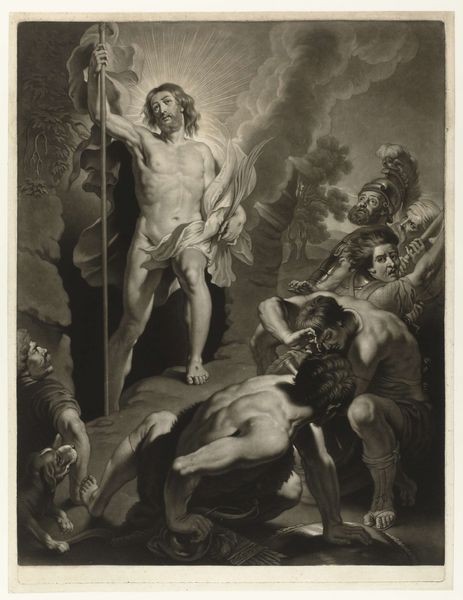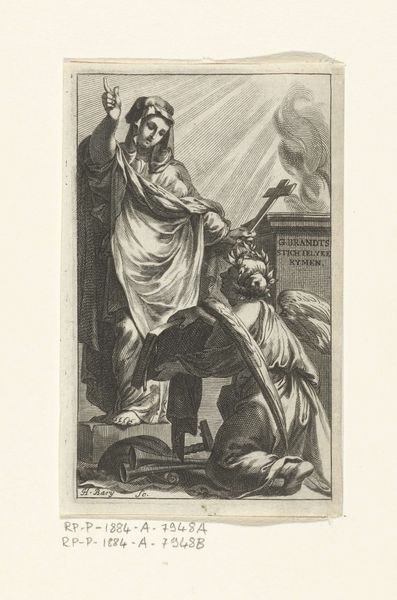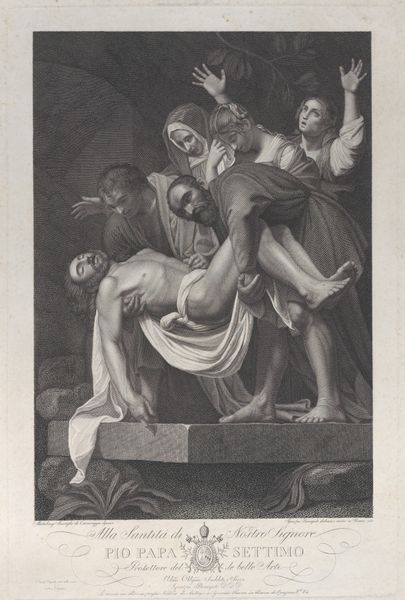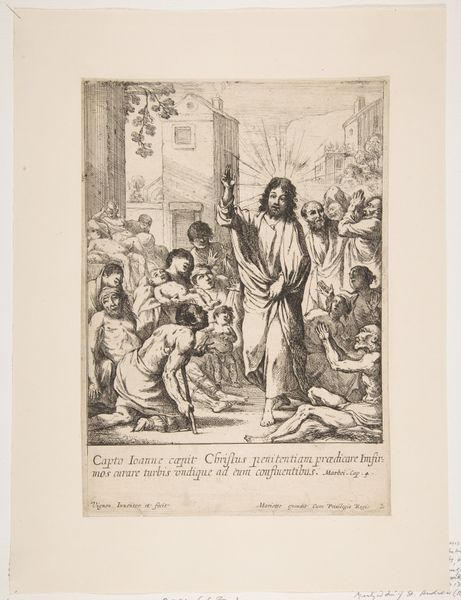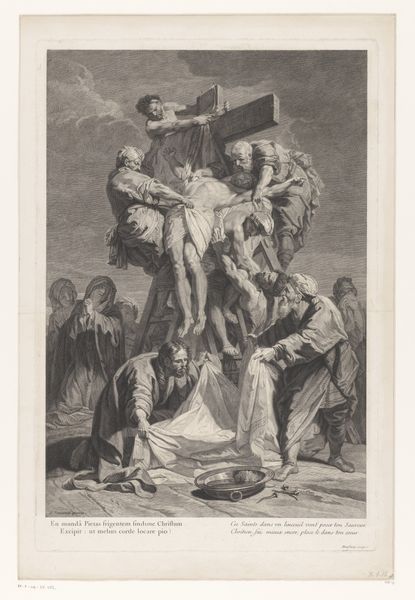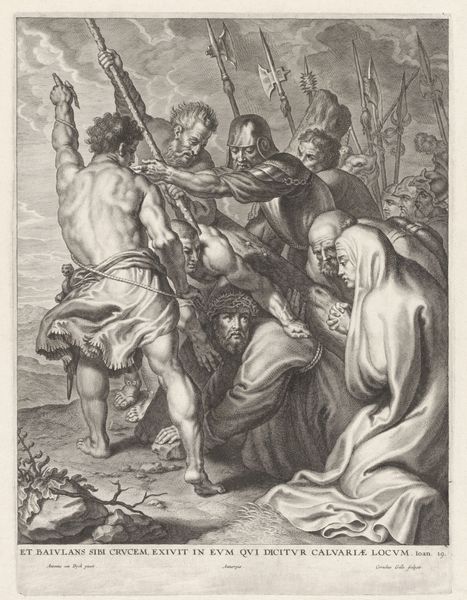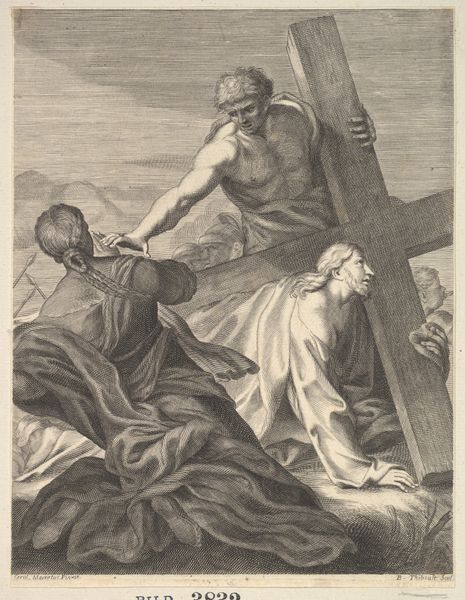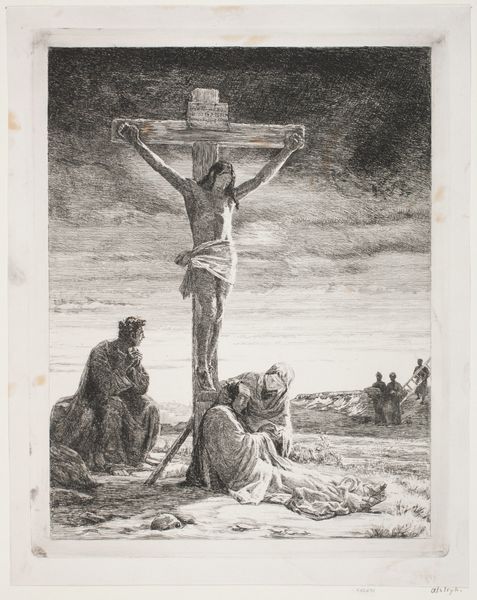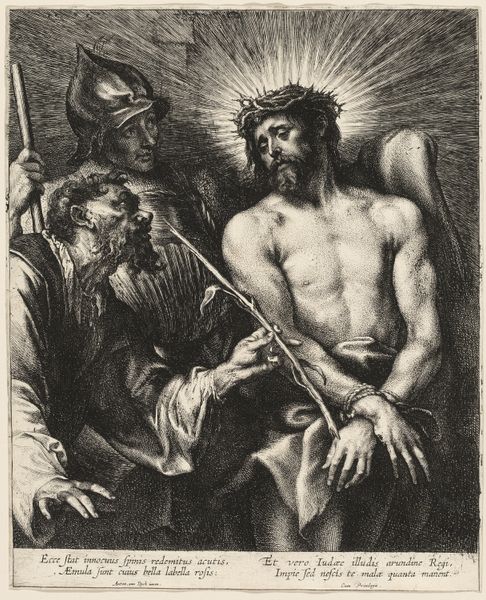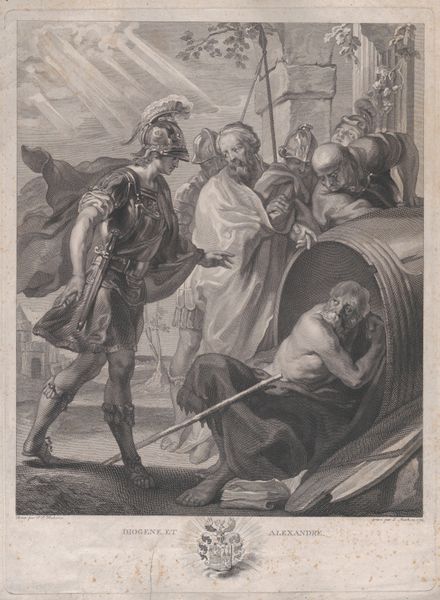
Dimensions: 1,023 × 790 mm (chine); 1,300 × 1,000 mm (sheet, sight)
Copyright: Public Domain
Curator: Here we have Frederick Stacpoole's "The Shadow of Death," an engraving from 1878, now residing here at the Art Institute of Chicago. Editor: What a powerful image. The chiaroscuro is quite striking. The stark contrast between light and shadow immediately creates this looming sense of foreboding and tension, doesn't it? Curator: Indeed. Stacpoole has adapted the iconic painting by Holman Hunt, who sparked considerable debate at the time. Hunt portrays Jesus as a young carpenter stretching after work, but the shadow cast behind him prefigures the crucifixion. Its theological implications sparked widespread discussion. Editor: The shadow is certainly the key. Here, the symbolism feels blatant. The mother, presumably Mary, seems to anticipate the suffering to come; note her downcast eyes and prayerful gesture. Wood shavings scatter across the floor; and it is an artistic touch that links a humble carpentry with implements of sacrifice. The whole scene prepares us emotionally and visually for the Passion. Curator: It certainly leans heavily into the Romanticism style, evoking deep emotional response, and as a print, this image had far wider distribution, shaping popular religious sentiment at the time in a way paintings exhibited to the elite could not. Consider the implications of widespread visual culture shaping religious feeling. Editor: Absolutely. The very objects surrounding Jesus—carpentry tools, the setting sun visible through the window, they all become symbols freighted with meaning when viewed through the lens of Christian narrative. Curator: The critical reaction at the time was mixed, some calling it overly sentimental and others praising its emotional intensity. This really highlights how Victorian society grappled with blending religious devotion with realistic representation. Editor: Regardless, "The Shadow of Death" leaves a lasting impression. Its symbolic power continues to resonate, reminding us of how art uses everyday imagery to explore timeless themes of faith, sacrifice, and the inevitability of death. Curator: Precisely. Stacpoole's engraving demonstrates how religious imagery adapts to socio-cultural contexts, reinforcing and propagating belief to a mass audience through the print medium.
Comments
No comments
Be the first to comment and join the conversation on the ultimate creative platform.

